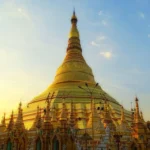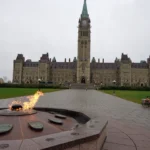
The Space Needle, a towering icon of Seattle, Washington, stands as a testament to human ingenuity and architectural marvel. Since its inception as the centerpiece of the 1962 World’s Fair, this futuristic structure has captured the imaginations of millions, offering visitors not only breathtaking views of the city but also a glimpse into the future. In this exploration, we delve into 25 intriguing historical facts and numerical trivia about the Space Needle, revealing the captivating story behind its construction, evolution, and lasting impact on Seattle’s landscape. From its rapid construction to its evolving paint colors, from its starring role in film to its designation as a historic landmark, join us as we unveil the remarkable history of this iconic tower.
The Space Needle was built for the 1962 World’s Fair, also known as the Century 21 Exposition. The 1962 World’s Fair was a major international event held in Seattle, Washington, to celebrate the theme of science and technology in the 21st century. The Space Needle was conceived as a symbol of the fair and represented the city’s futuristic aspirations. It served as both an architectural marvel and an observation tower, allowing visitors to enjoy breathtaking views of the fairgrounds and the surrounding city.
Construction of the Space Needle began on April 17, 1961, and was completed in less than one year. The speedy construction of the Space Needle was a remarkable feat of engineering. The tight schedule was driven by the impending opening of the World’s Fair, and the builders, led by Howard S. Wright, worked tirelessly to complete the structure in time. Their efficiency in constructing such an iconic landmark in under 12 months was a testament to their skill and dedication.
The architect responsible for the Space Needle’s design was John Graham Jr. John Graham Jr. was a prominent Seattle architect known for his innovative and modern designs. He envisioned the Space Needle as a structure that would represent the future while capturing the spirit of the Space Age. Graham’s design, with its sleek, futuristic appearance and rotating restaurant, became an enduring symbol of Seattle.
The Space Needle stands at a height of 605 feet (184 meters) from the ground to its top. The remarkable height of the Space Needle made it the tallest structure on the West Coast at the time of its completion. Its towering presence on the Seattle skyline has made it an instantly recognizable landmark and a must-visit attraction for tourists and locals alike.
At the time of its construction, it was the tallest structure west of the Mississippi River. The Space Needle’s height was a source of pride for Seattle and the entire West Coast. It represented a significant engineering achievement and contributed to Seattle’s reputation as a forward-thinking city.
The total cost of building the Space Needle in 1962 was approximately $4.5 million, equivalent to around $38 million today when adjusted for inflation. The investment in the Space Needle reflected the city’s commitment to hosting a successful World’s Fair. The return on this investment, in terms of tourism and civic pride, has been substantial over the years.
The Space Needle has a maximum diameter of 138 feet (42 meters) at its widest point. This broad base provides stability to the structure, which is particularly important given Seattle’s seismic activity. The Space Needle was designed to withstand earthquakes and strong winds, making it a safe and enduring landmark.
The top of the Space Needle features an observation deck with a rotating restaurant known as the SkyCity Restaurant. The combination of an observation deck and a revolving restaurant offers visitors a unique dining experience with unparalleled views of the city and its surroundings. The SkyCity Restaurant has been a popular destination for special occasions and romantic dinners since its opening.
The restaurant at the top completes a full rotation approximately once every 47 minutes, providing diners with a 360-degree view of Seattle and its surroundings. The slow rotation of the restaurant ensures that every table enjoys a constantly changing view, allowing guests to see Seattle from every angle without having to leave their seats.
The elevator ride to the top of the Space Needle takes only 41 seconds. The high-speed elevator ride to the observation deck is a thrilling experience in itself. It whisks visitors from the base of the structure to the top in just 41 seconds, making it one of the quickest ascents to an observation deck in the world. This rapid vertical transportation adds to the excitement of visiting the Space Needle and maximizes the time visitors can spend enjoying the panoramic views from the top.
The Space Needle was officially opened to the public on April 21, 1962, the first day of the World’s Fair. The opening of the Space Needle marked a significant moment in the history of Seattle and the World’s Fair. It was a day of celebration and anticipation as visitors flocked to experience the futuristic observation tower and the fair’s exhibits.
The observation deck is situated at 520 feet (158 meters) above ground level. This elevation provides visitors with breathtaking views of Seattle and the surrounding region. From this vantage point, one can appreciate the beauty of the city, the waters of Puget Sound, and the majestic peaks of Mount Rainier and the Cascade and Olympic Mountain ranges.
The Space Needle’s original paint color was “Galaxy Gold,” but it was later repainted “Astronaut White” to maintain its futuristic appearance. The change in paint color was made to keep the Space Needle looking fresh and modern. “Astronaut White” not only aligns with the Space Age theme but also helps protect the structure from weathering.
It has 25 lightning rods, which help protect the structure from lightning strikes. Given the Space Needle’s height and prominent location, it’s important to safeguard it from lightning strikes, which can be a threat during thunderstorms. The lightning rods are designed to safely conduct electrical discharges away from the structure, helping to preserve its integrity.
The Space Needle’s revolving restaurant was initially named the “Eye of the Needle,” but it was later renamed the SkyCity Restaurant. The restaurant’s original name, “Eye of the Needle,” was a nod to the Space Needle’s iconic design. However, the name was changed to SkyCity Restaurant, reflecting its elevated location and offering guests a sense of dining in the sky.
The Space Needle was featured in the opening credits of the TV series “Frasier,” which was set in Seattle. “Frasier,” a popular sitcom that aired from 1993 to 2004, showcased the beauty and culture of Seattle. The Space Needle’s inclusion in the show’s opening sequence further solidified its status as a symbol of the city.
In 1974, stuntman Gene Hackman climbed the exterior of the Space Needle for the film “The Poseidon Adventure.” Gene Hackman’s daring climb added to the Space Needle’s fame and made it a memorable scene in the disaster film “The Poseidon Adventure.” This cinematic moment brought renewed attention to the iconic landmark.
The Space Needle’s SpaceBase gift shop at the base of the structure offers a variety of souvenirs and memorabilia. Visitors to the Space Needle can browse the SpaceBase gift shop for a wide range of Seattle and Space Needle-themed merchandise, making it a popular stop for those looking to take home a piece of the experience.
It is estimated that more than 1 million people visit the Space Needle each year. The Space Needle continues to be a major tourist attraction in Seattle, drawing visitors from all over the world. Its timeless appeal, iconic status, and breathtaking views ensure its popularity as a must-visit destination.
The Space Needle has been illuminated with different color schemes to mark various events and holidays. The Space Needle’s dynamic lighting displays have been used to celebrate holidays, local sports team victories, and special occasions. These light shows add a vibrant and festive atmosphere to Seattle’s skyline, making the Space Needle a focal point for city-wide celebrations.
The 1962 World’s Fair attracted over 2.3 million visitors, many of whom visited the Space Needle. The 1962 World’s Fair was a tremendous success, drawing millions of visitors from around the world. The Space Needle was a primary attraction during the fair, and its futuristic design and panoramic views made it a must-see destination for fairgoers.
The Space Needle was designated as a historic landmark by the city of Seattle in 1999. This designation recognizes the Space Needle’s cultural and historical significance to the city of Seattle and ensures its preservation for future generations. It is considered an iconic symbol of Seattle’s identity and history.
In 2000, the Space Needle underwent a major renovation, including the installation of new glass floors on the observation deck. The renovation aimed to update and improve the visitor experience. The installation of glass floors on the observation deck allowed visitors to look directly down to the ground, enhancing the sense of height and adventure.
The Space Needle continues to be an iconic symbol of Seattle and a popular tourist attraction, drawing visitors from around the world. Despite being over six decades old, the Space Needle remains a beloved symbol of Seattle, attracting tourists, photographers, and enthusiasts who come to appreciate its unique architecture and panoramic views. Its enduring popularity reflects its status as a timeless icon.
The Space Needle’s legacy extends beyond its physical presence. It has become an integral part of Seattle’s cultural identity and a symbol of progress and innovation. As it continues to stand tall on the city’s skyline, the Space Needle serves as a reminder of the city’s past achievements and a beacon for its future endeavors in technology, tourism, and urban development.









